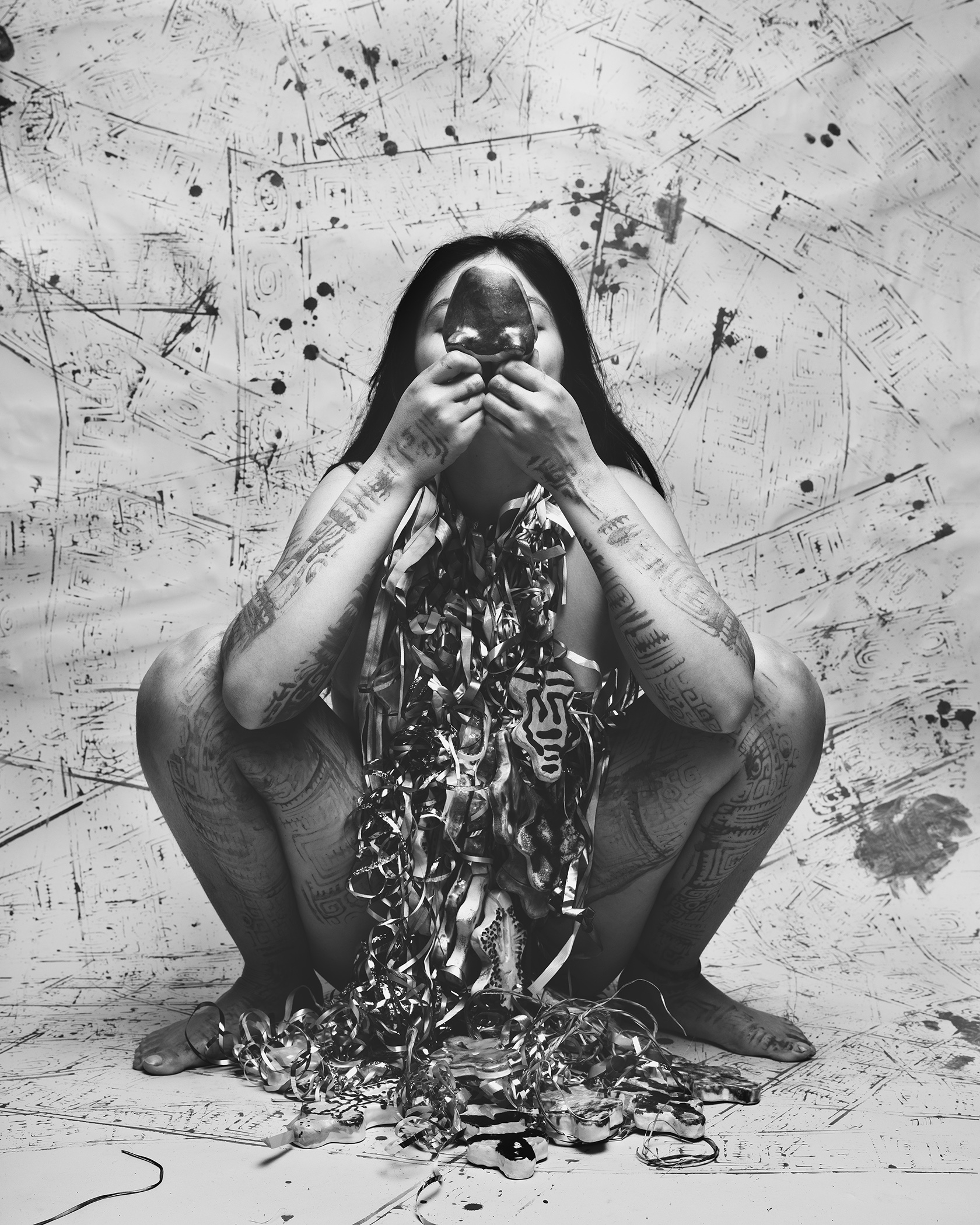
When one thinks of an archive, it is often assumed or expected that the photographs depict the past as it happened. By general definition, archives are meant to be records of our lived histories, which are preserved for future generations. These images can be referenced for research, to shape new policies, or to feel nostalgic in the case of an economically or socially glorious era. However, a new group exhibition at the International Center of Photography (ICP) challenges this traditional role and why this perspective is quite exceptional.
The lead image is by Koyoltzintli. All images are courtesy of the artists and ICP. Used with permission.
The showcase, To Conjure: NewArchives in Recent Photography, looks at the work of seven artists who have used the theme to reimagine a new future for the medium. ICP notes that this exhibit has drawn its inspiration from a previous showcase curated by Okwui Enwezor. Called Archive Fever: Uses of the Document in Contemporary Art, this exhibit provided a glimpse into the work of two dozen artists and how they included archival documents and materials into their projects to portray themes of history, memory, identity, and loss. Archive Fever was on view at ICP in 2008, but since then, archival material in contemporary photography has taken strong roots, especially in genres such as conceptual photography.
S
Akin to this, To Conjure also uses photography to preserve memories but in a unique manner. The artists—Widline Cadet, Koyoltzintli, Tarrah Krajnak, Shala Miller, Kameelah Janan Rasheed, Keisha Scarville, and Sasha Wortzel—highlight how archives should inspire change. The works have been created to question the existing narratives while helping us to understand the construction of history, memory, and identity. As Guest Curator Keisha Scarville explains, the artists are “locating archives in the elsewhere, the otherwise, the elusive, the familial, the obscure, the speculative, the sonic, and in death.” This means the photographers are looking at non-traditional spaces where history may not be formally recorded. For instance, lived experiences, forgotten or hidden narratives, and even complex places such as sound or memory.
Here is a brief look at the works that are expected at the ICP exhibit:
- Widline Cadet: She uses distinct styles to blend the past and present and reflects on her family’s immigration to the United States. Born in Haiti, her series offers a glimpse into her experience with migration while also highlighting themes of identity and belonging.

- Koyoltzintli: Her work recreates historical Indigenous instruments through portraiture that features her and her daughter. This inclusion helps look at different generations but also emphasizes how the past is remembered and actively lived and passed down. Thus, her work reminds us that history is an ever-evolving part of our lives.
- Tarrah Krajnak: Through her project, Krajnak focuses on her personal history and examines her origins. Born in Lima, she was later adopted. So, the work, which are cyanotypes that incorporate her own body, connects her physical presence to the place of her birth. This way, she shares with us how one can create their own archive, especially when no other historical record exists.

- Shala Miller: Their series is both historical with a tinge of fiction that follows a Black and femme main character, who challenges the standard hero-antagonist binary. For this work, Miller uses newspapers, advertisements, and typography in their photographs to allow new complex identities and histories to appear.

- Kameelah Janan Rasheed: Her project, which uses aquatint lithographs, focuses on the spiritual and revolutionary practices of the South and the Caribbean. The work highlights history, invention, and the significance of dreams and the subconscious.

- Keisha Scarville: The photographs showcase Scareville’s late mother’s clothing, which is an emblem of memory and loss. Instead of highlighting the clothes’ origin and history, the images hope to talk about the “materiality of absence.” Thus, Scarville reflects on the emotional and physical void left by her mother’s passing, while her garments are the only way to connect to her in the present.
- Sasha Wortzel: Her series on the project on the Florida Everglades is about the land as an archive that holds a wealth of information. With her multi-disciplinary approach, Wortzel focuses on the land’s colonial history while also addressing the ongoing environmental destruction it faces today. Since the land is the living archive, Wortzel’s work comments on its exploitation and cultural erasure, as well as contemporary ecological crises.
T
The exhibition will be on display from January 23 to May 5. For more information, visit the International Center of Photography’s website.

